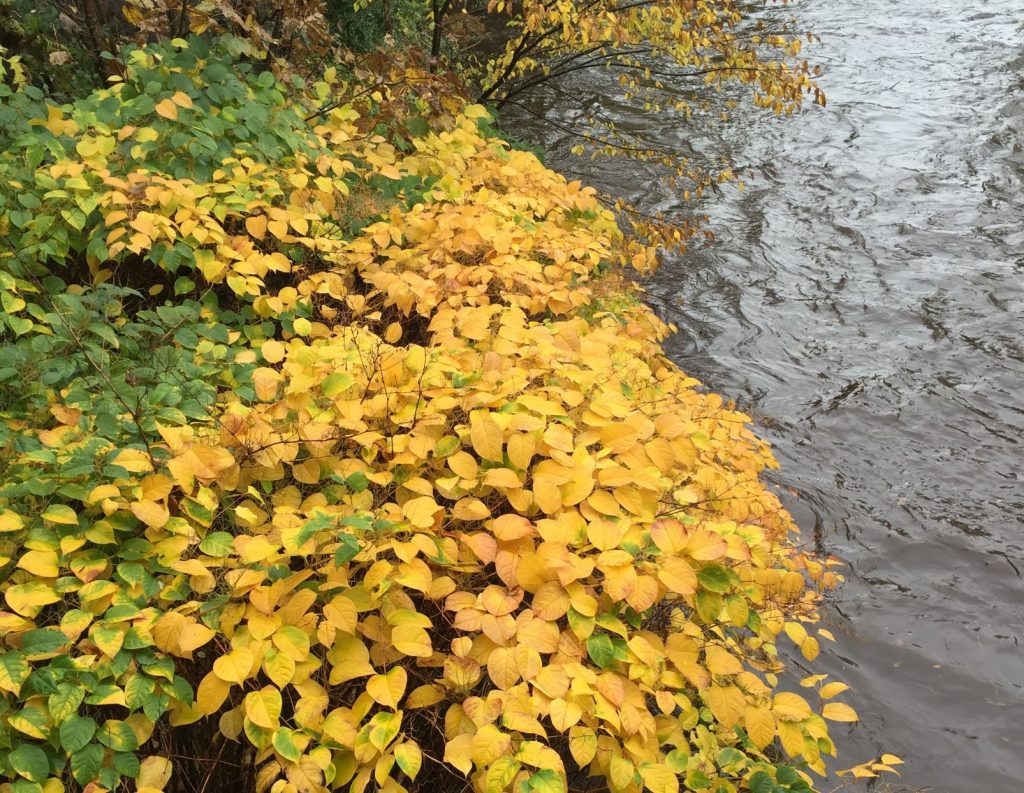
WHY IT CAN BE HIGHLY EFFECTIVE OR COMPLETELY INEFFECTIVE!
The beautiful bright green leaves, so typical of this impressive plant species, result from the presence and activity of a pigment known as Chlorophyll. The role of Chlorophyll is to trap blue and red light from the sun and convert this into carbohydrates / glucose to feed the plant, this process is known as photosynthesis. Any excess food generated is turned into starch and stored in the roots until needed. As winter approaches and days shorten Japanese Knotweed begins to shut down the food production activity.
The plant starves the chlorophyll of water by thickening the leaf nodes and causing a blockage. This causes the chlorophyll to die and the leaf loses its green colouring, reverting back to its base or decaying colouring of yellow, red, brown.
Application of a foliar herbicide to leaf which has changed into the autumnal colouring is unlikely to be effective because the leaf is now effectively disconnected from the body of the plant. The herbicide will not make its way down into the root system in an effective way.
If you were to spray a specimen late in the growing season where the outer leaves are yellow and the inner still green you may see an interesting pattern the following growing season where there is almost a donut like shape of growth with little in the centre and the outer growth more robust because the yellow leaf perimeter was less affected by the herbicide application.
SMART Knotweed Solutions speak to us about low cost Japanese Knotweed management.

